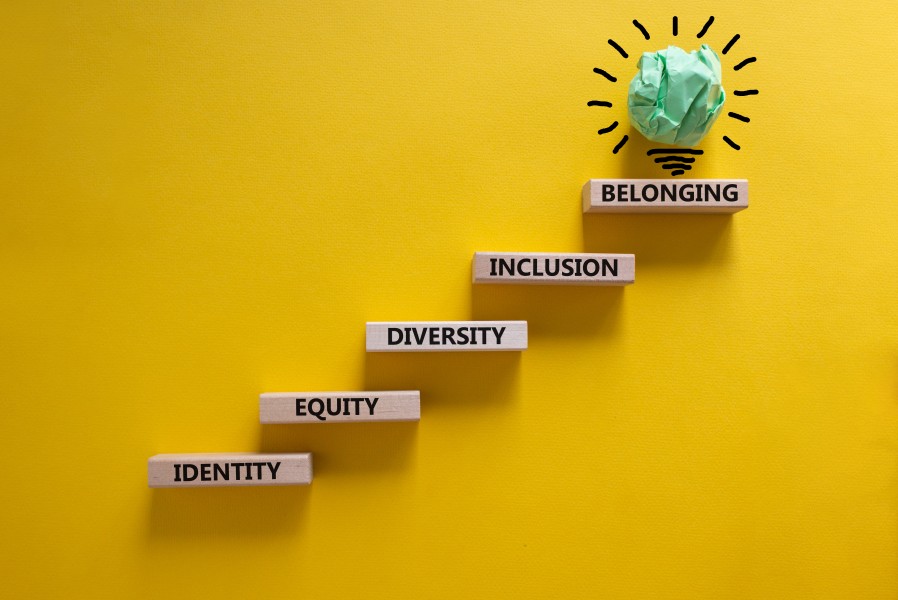Comments
- No comments found

In the era of DEI (diversity, equity and inclusion), there is more emphasis on workplace inclusion and social inclusion, but not necessarily on digital inclusion.
While access to the internet has long been a given for billions of people around the world, especially since the advent of smartphones, getting online hasn't always been easy. Aside from having access to a computer, the cost of internet access was the main stumbling block.
American entrepreneur Sky Dayton had a huge hand in changing this reality when he created EarthLink in 1994. Prior to this, AOL was charging by the minute for internet use. EarthLink modified the model, offering users a flat monthly fee and good telephone support (remember, this was back in the days when internet access took place via a modem and dial-up!).
Dayton's vision was a strong start. But today, digital inclusion remains an issue for underserved communities. COVID-19 exacerbated the digital divide: With everyone sheltering in place for a protracted period of time, access to public computers disappeared, and with it, the ability for underserved households to participate in communicating with the outside world. Of course, this also impacted children's education severely as teaching moved online.

In response, not just to COVID limitations but to the need for greater digital access across all underserved communities, Broadband USA, part of the National Telecommunications and Information Administration (NTIA), convened the Digital Equity Leaders Network. This group of state and local government leaders, which works to bridge the digital divide, meets regularly to share best practices, resources and strategies.
There are a large number of federal agencies, initiatives and reports focused on digital inclusion. A sampling:
· Administration for Children and Families – Digital Inclusion: Resources for State and Tribal Human Service Leaders. This document highlights funding streams and opportunities from several federal agencies and provides information on policy and data briefs from federal agencies and external organizations.
· Youth.Gov – Broadband Access Resources: Information about funding for human services providers, educational institutions, individuals and families to access broadband and devices.
· Closing the Digital Divide: A Framework for Meeting CRA Obligations (CRA stands for Community Retirement Act). A road map for best practices, tips and templates for preparing the case for digital opportunity investments; appendices of broadband resources for understanding needs in assessment areas.
· Disconnected: Seven Lessons on Fixing the Digital Divide. Report on the lessons learned after Kansas City launched a project in 2018 to outline issues of the digital divide and identify innovative community solutions.
Alexander Graham Bell may not have lived to see the internet age, but his legacy lives on: In 2021, multinational conglomerate AT&T (informally known as Ma Bell in the U.S.) announced it would invest $2 billion over the next three years to help address digital inclusion. This commitment combines AT&T's low-cost broadband service offerings with community investment, aimed toward helping the millions of Americans who lack access to broadband connectivity.
The Affordable Connectivity Program (ACP), based on household income, is another huge step in bringing broadband service to eligible households. The ACP is a long-term initiative created to help low-income families afford high-quality internet service. Digital inclusion is a very hot button in education, because the biggest barrier impacting access to education is connectivity, both in the classroom and at home.
The ACP, as part of the Biden Administration's "Internet for All" effort, aims to close the accessibility/affordability gap for an estimated 48 million qualifying U.S. households. Since the ACP began enrolling participants at the start of 2022, nearly 13 million households have registered, more than a fourth of those eligible. More than 1300 service providers are participating in the program, with a Biden Administration-capped fee of $30/month. This ACP benefit means families in covered areas can access high-speed internet at no cost.
Also in 2021, the Internet Society announced a grant program, Expanding Potential in Communities, or Truist EPIC Grant, to support broadband initiatives that would help remove barriers to digital education, employment, and social services in the southeastern United States. The Truist Grant distributed $1 million through a series of grants to organizations designed to bring high-speed infrastructure to low-income communities and indigenous populations.

In conclusion, we’ll highlight the five digital inclusion trends taking place nationwide as recognized by the NTIA:
· Digital Inclusion Planning. More governments and coalitions are creating citywide, regional and statewide broadband and digital inclusion planning programs. Many of these programs also receive grants, and boast a dedicated staff and outcome-based measurement. Chicago and Philadelphia are two examples of cities that successfully pioneered citywide digital inclusion coalitions.
· Program Integration. Federal agencies understand that digital literacy and broadband access are crucial to closing the digital divide. Therefore, digital inclusion is now recognized as an "eligible expense" in government programs and funding streams.
· Performance Measurement. Metrics help program managers determine gaps and adapt programs as needs evolve, so surveys are an integral aspect of many programs, allowing state, federal and local agencies to collect data that assesses how the program is faring in meeting its goals.
· Library Updates. Today, the majority of the 9,000 U.S. libraries offer free computer access and in many cases, digital literacy training. As community hubs for digital access, libraries have become an essential resource in digital inclusion, especially in underserved communities.
· Federal Power. Underserved communities, particularly in rural areas, still lack broadband infrastructure. In this respect, the NTIA leverages federal assets to incentivize private investment.
Leave your comments
Post comment as a guest